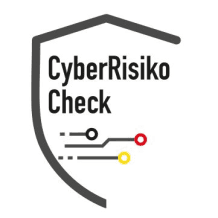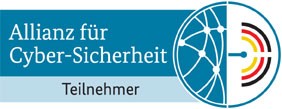Introduction to DCC / MSCache Hash
DCC or Domain Cached Credentials, also known as MSCache Hash, is a mechanism that allows Windows systems to store authentication information locally. This feature is particularly useful for users who need to log in to a system when no Active Directory (AD) is available. The DCC / MSCache Hash is a critical component of Windows security, offering both advantages and disadvantages.
How Does the DCC / MSCache Hash Work?
The DCC / MSCache Hash stores password hashes locally in the registry of each Windows system. When a user successfully logs in, a hash of the password that matches that of the AD is generated and stored. During a later login without an AD connection, the system checks this hash to confirm the user's identity.
Security Risks of the DCC / MSCache Hash
While the DCC / MSCache Hash is useful, it carries several security risks:
1. Bruteforce Attacks
Since the hashes are stored locally, attackers can extract them and perform offline bruteforce attacks to decrypt passwords. These attacks can be particularly dangerous when weak passwords are used.
2. Hash Reuse
If an attacker gains access to the stored hashes, there is a risk that this information could be used for unauthorized access to other systems within the same network.
3. Insider Threats
Internal attackers with physical or administrative access to systems could misuse the DCC / MSCache hashes to log in to systems without authorization.
Mitigation Measures Against DCC / MSCache Hash Vulnerabilities
To minimize the mentioned risks, various protective measures can be taken:
1. Use of Strong Passwords
Set complex and unique passwords to reduce the impact of bruteforce attacks. Password managers can help in generating and securely storing complex passwords.
2. Frequent Password Changes
Regularly changing passwords can reduce the risk of permanent damage resulting from the extraction of a DCC / MSCache hash.
3. Use of Multi-Factor Authentication (MFA)
An additional verification method can prevent attackers from accessing systems using only the hash.
4. Network Segmentation
By separating networks into smaller, more manageable segments, it can be ensured that a successful attack on one part of the network does not immediately spread to others.
5. Regular Security Audits
Assessments by professional security services help identify vulnerabilities in systems and take necessary security measures.
Important Considerations
Managing and securing DCC / MSCache hashes requires attention and proactive measures. Companies should regularly review their security policies to ensure they align with current threat landscapes.
A comprehensive understanding of how DCC / MSCache Hash works and its risks is crucial to ensure effective protection of their IT infrastructure.
Conclusion
DCC / MSCache hashes are a necessary aspect of system authentication, but they come with certain risks that can be significantly reduced through appropriate security measures. By using strong passwords, regularly changing passwords, employing MFA, and implementing other security strategies, companies can greatly reduce the risk of attacks on their systems.
Stay informed about current security risks to ensure the protection of your data and systems.
DCC / MSCache Hash in Germany: Current Developments
The significance of DCC / MSCache Hash in Germany is continuously growing. According to recent studies by the Federal Office for Information Security (BSI), German companies are increasingly affected by cyber threats. The Bitkom association reports that 84% of German companies have been victims of cyberattacks in the past two years.
Especially in the area of DCC / MSCache Hash, the following trends are emerging:
Increasing investments in preventive security measures
Heightened awareness for holistic security concepts
Integration of DCC / MSCache Hash into existing compliance frameworks
EU Compliance and DCC / MSCache Hash
With the introduction of the NIS2 directive and stricter GDPR requirements, German companies need to adapt their security strategies. DCC / MSCache Hash plays a central role in fulfilling regulatory requirements.
Important compliance aspects:
Documentation of security measures
Regular review and updates
Proof of effectiveness to regulatory authorities
Practical Implementation in the Corporate Daily Routine
The integration of DCC / MSCache Hash into daily corporate routines requires a structured approach. Experience shows that companies benefit from a phased implementation that considers both technical and organizational aspects.
Think of DCC / MSCache Hash as insurance for your company: The better prepared you are, the lower the risk of damage from security incidents.
Additional Security Measures
For a comprehensive security strategy, you should combine DCC / MSCache Hash with other security measures:
Vulnerability Management - Systematic vulnerability management
Penetration Testing - Comprehensive security tests
Security Hardening - Employee awareness
Incident Response Plan - Preparation for security incidents
Conclusion and Next Steps
DCC / MSCache Hash is an essential component of modern cybersecurity. Investing in professional DCC / MSCache Hash measures pays off in the long run through increased security and compliance conformity.
Do you want to optimize your security strategy? Our experts are happy to assist you in implementing DCC / MSCache Hash and other security measures. Contact us for a non-binding initial consultation.
🔒 Act now: Have our experts assess your current security situation
📞 Request a consultation: Arrange a free initial consultation on DCC / MSCache Hash
📋 Compliance Check: Review your current compliance situation
📌 Related Topics: Cybersecurity, IT Security, Compliance Management, Risk Assessment
Best Practices for DCC / MSCache Hash
The successful implementation of DCC / MSCache Hash requires a systematic approach. Based on our extensive experience in cybersecurity consulting, the following best practices have proven effective:
Strategic Planning
A well-thought-out strategy is the foundation for successful DCC / MSCache Hash. You should consider the following aspects:
Define clear goals and success metrics
Involve stakeholders early and establish responsibilities
Calculate realistic timelines and budgets
Conduct risk assessments and contingency planning
Technical Implementation
The technical implementation of DCC / MSCache Hash should be carried out incrementally:
Analyze the current situation: Evaluate existing security measures
Gap Analysis: Identify areas for improvement
Pilot Project: Trial run in a limited area
Rollout: Gradual expansion across the entire company
Monitoring: Continuous monitoring and optimization
Common Challenges and Solution Approaches
When implementing DCC / MSCache Hash, similar challenges regularly arise. Here are proven solution approaches:
Resistance to Change
Employees are often skeptical about new security measures. Successful change management strategies include:
Transparent communication about benefits and necessity
Training and further education measures
Involvement of opinion leaders as multipliers
Gradual introduction with quick wins
Budget Constraints
Limited resources require a prioritized approach:
ROI calculation for various measures
Phased implementation based on priorities
Utilization of synergies with existing systems
Consideration of compliance requirements
Success Measurement and KPIs
The success of DCC / MSCache Hash measures should be measurable. Relevant metrics include:
Quantitative Metrics
Number of identified and resolved vulnerabilities
Reduction in average response time to security incidents
Improvement in compliance ratings
ROI of implemented security measures
Qualitative Assessments
Employee satisfaction and acceptance
Feedback from clients and partners
Evaluation by external auditors
Reputation and trust in the market
Future Trends and Developments
The landscape of cybersecurity is continuously evolving. Current trends that influence DCC / MSCache Hash include:
Artificial Intelligence: AI-based threat detection and mitigation
Zero Trust Architecture: Trust is not assumed but continuously verified
Cloud Security: Adaptation to hybrid and multi-cloud environments
IoT Security: Protection of connected devices and systems
Quantum Computing: Preparing for post-quantum cryptographic methods
Companies that invest in DCC / MSCache Hash today are positioning themselves optimally for future challenges and opportunities.
Your Next Step
The implementation of DCC / MSCache Hash is an investment in the future of your business. Our experts are here to help you develop a tailored solution that meets your specific needs.
Start today:
📞 Free Consultation: Schedule a non-binding conversation
📋 Security Assessment: Have your current security situation evaluated
🎯 Tailored Solution: Development of an individualized DCC / MSCache Hash strategy
🚀 Implementation: Professional execution with continuous support
Contact us today and take the first step toward a more secure digital future.




